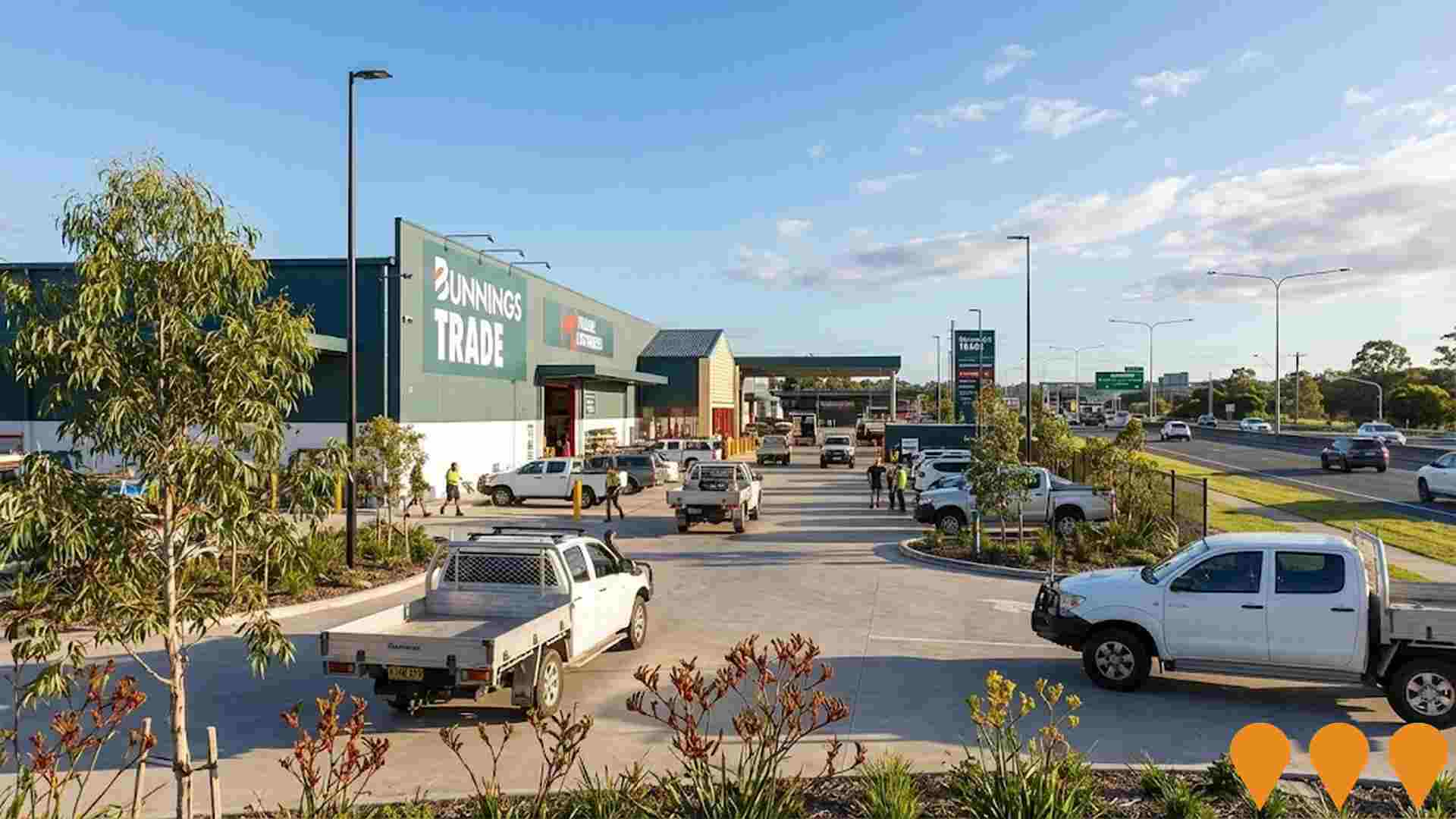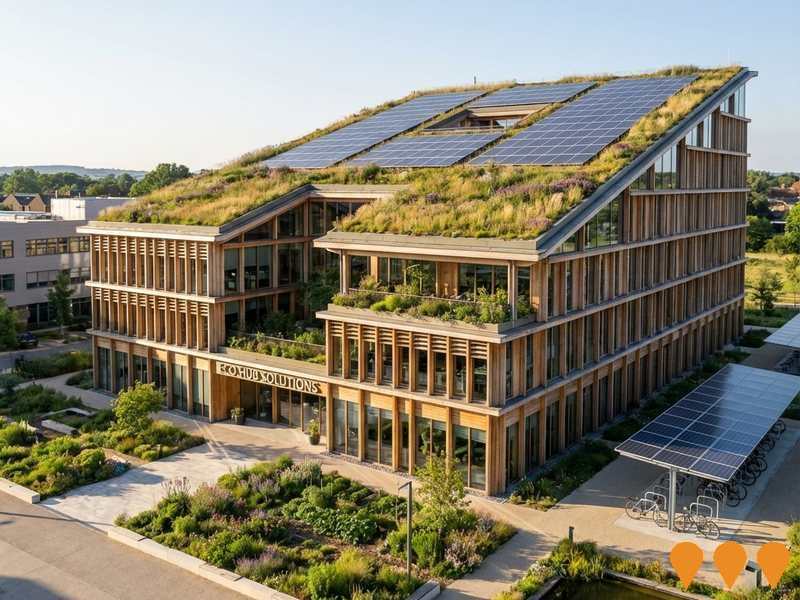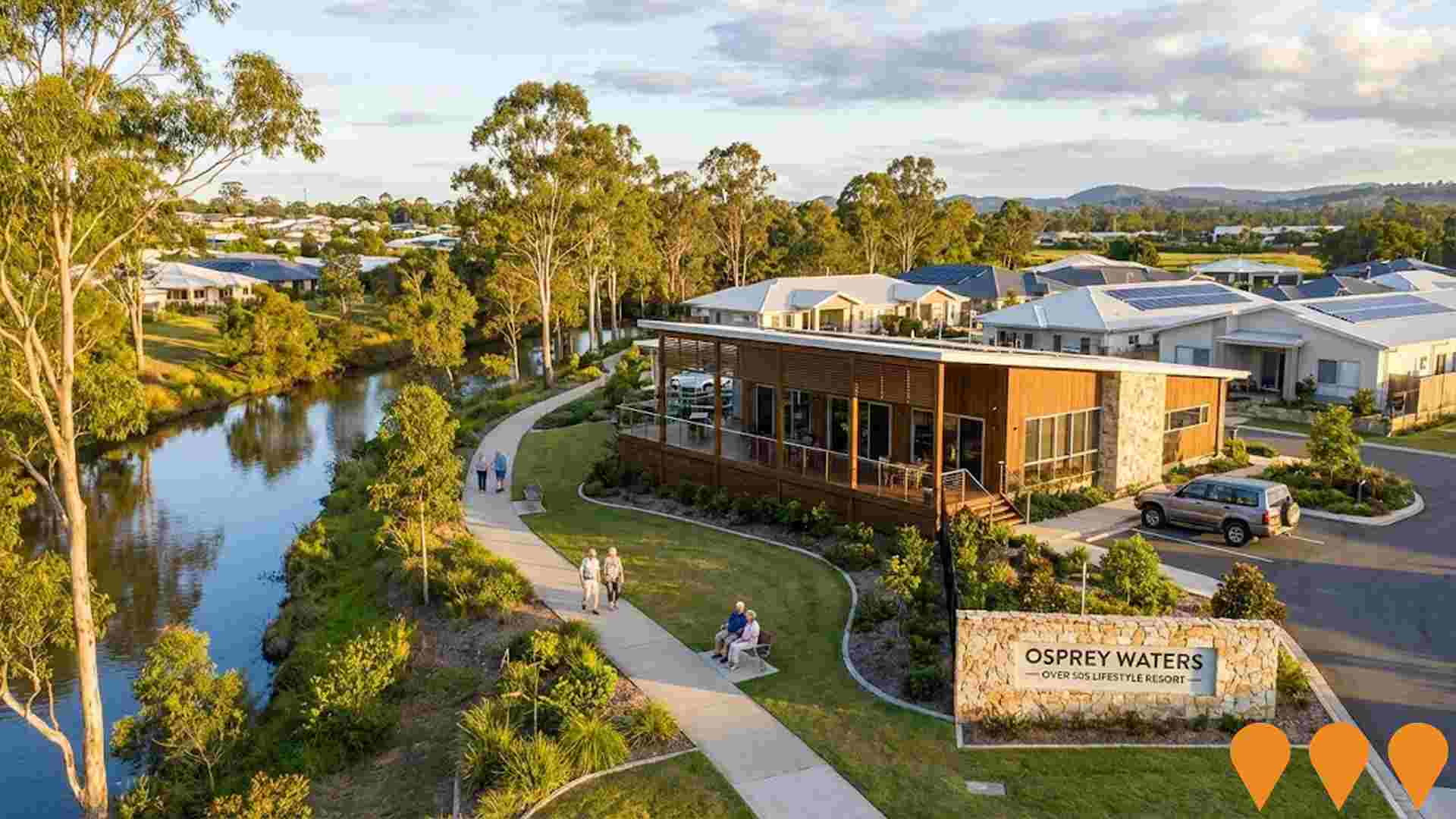Chart Color Schemes
est. as @ -- *
ABS ERP | -- people | --
2021 Census | -- people
Sales Activity
Curious about local property values? Filter the chart to assess the volume and appreciation (including resales) trends and regional comparisons, or scroll to the map below view this information at an individual property level.
Find a Recent Sale
Sales Detail
Population
An assessment of population growth drivers in Eagleby reveals an overall ranking slightly below national averages considering recent, and medium term trends
Eagleby's population is approximately 15,101 as of August 2025. This figure represents an increase of 1,507 people, a rise of 11.1% since the 2021 Census which recorded a population of 13,594. The change was inferred from the estimated resident population of 14,343 from the ABS as of June 2024 and an additional 349 validated new addresses since the Census date. This results in a population density ratio of 1,092 persons per square kilometer, comparable to averages seen across other locations assessed by AreaSearch. Eagleby's growth rate exceeded both national (8.6%) and state averages, positioning it as a growth leader in the region. Overseas migration contributed approximately 61.8% of overall population gains during recent periods.
AreaSearch uses ABS/Geoscience Australia projections for each SA2 area released in 2024 with a base year of 2022. For areas not covered by this data and years post-2032, Queensland State Government's SA2 area projections released in 2023 based on 2021 data are adopted. However, these state projections do not provide age category splits; therefore, AreaSearch applies proportional growth weightings aligned with the ABS Greater Capital Region projections for each age cohort, released in 2023 and based on 2022 data. Future population trends suggest a slight increase below the national median statistical areas' average, with an expected growth of 1,392 persons to 2041, resulting in a total gain of 4.2% over the 17-year period.
Frequently Asked Questions - Population
Development
AreaSearch analysis of residential development drivers sees Eagleby recording a relatively average level of approval activity when compared to local markets analysed countrywide
Eagleby has averaged approximately 50 new dwelling approvals annually over the past five financial years, totalling 251 homes. As of FY-26, 13 approvals have been recorded. Historically, each year per dwelling constructed has added around 1.2 new residents between FY-21 and FY-25. However, this figure has recently accelerated to 5 people per dwelling over the past two financial years, indicating increasing demand. The average construction cost of new homes in Eagleby is $294,000, which is below the regional average, suggesting more affordable housing options for buyers.
This year alone, there have been $2.5 million in commercial approvals, reflecting the area's predominantly residential nature. Compared to Greater Brisbane, Eagleby has significantly less development activity, at 66.0% below the regional average per person. This constrained new construction typically reinforces demand and pricing for existing dwellings. Nationally, Eagleby also reflects market maturity with lower development activity, potentially pointing to possible development constraints. New development consists of 85.0% detached dwellings and 15.0% townhouses or apartments, preserving the area's suburban nature and attracting space-seeking buyers.
With around 426 people per approval, Eagleby indicates a mature market. Future projections estimate an addition of 634 residents by 2041, suggesting that at current development rates, new housing supply should comfortably meet demand, providing good conditions for buyers and potentially supporting growth beyond current population projections.
Frequently Asked Questions - Development
Infrastructure
Eagleby has moderate levels of nearby infrastructure activity, ranking in the 49thth percentile nationally
Twenty-one infrastructure projects have been identified by AreaSearch as potentially impacting the area's performance. Notable projects include Halcyon Edgebrook, Cowper Avenue Catchment Master Drainage Project, Beenleigh Community Hub, and Loganholme District Centre (Bunnings & Retail Expansion). The following list details those expected to be most relevant.
Professional plan users can use the search below to filter and access additional projects.
INFRASTRUCTURE SEARCH
 Denotes AI-based impression for illustrative purposes only, not to be taken as definitive under any circumstances. Please follow links and conduct other investigations from the project's source for actual imagery. Developers and project owners wishing us to use original imagery please Contact Us and we will do so.
Denotes AI-based impression for illustrative purposes only, not to be taken as definitive under any circumstances. Please follow links and conduct other investigations from the project's source for actual imagery. Developers and project owners wishing us to use original imagery please Contact Us and we will do so.
Frequently Asked Questions - Infrastructure
Beenleigh Town Square
Completed town centre urban renewal project in the heart of Beenleigh that has transformed a former six way roundabout into a flexible civic plaza and community gathering space. The square includes a civic platform, pavilion structure that could accommodate a future cafe, event lawns, dedicated market space, public amenities, power and water services, and improved pedestrian connections to the wider Beenleigh Town Centre. It now regularly hosts markets, festivals and concerts and acts as a catalyst for broader Beenleigh streetscape upgrades, with construction works completed in early 2022 under the leadership of Logan City Council. Sources: Logan City Council Beenleigh Town Square project information, venue hire pack and internal record and category mapping. :contentReference[oaicite:0]{index=0} :contentReference[oaicite:1]{index=1}:contentReference[oaicite:2]{index=2}
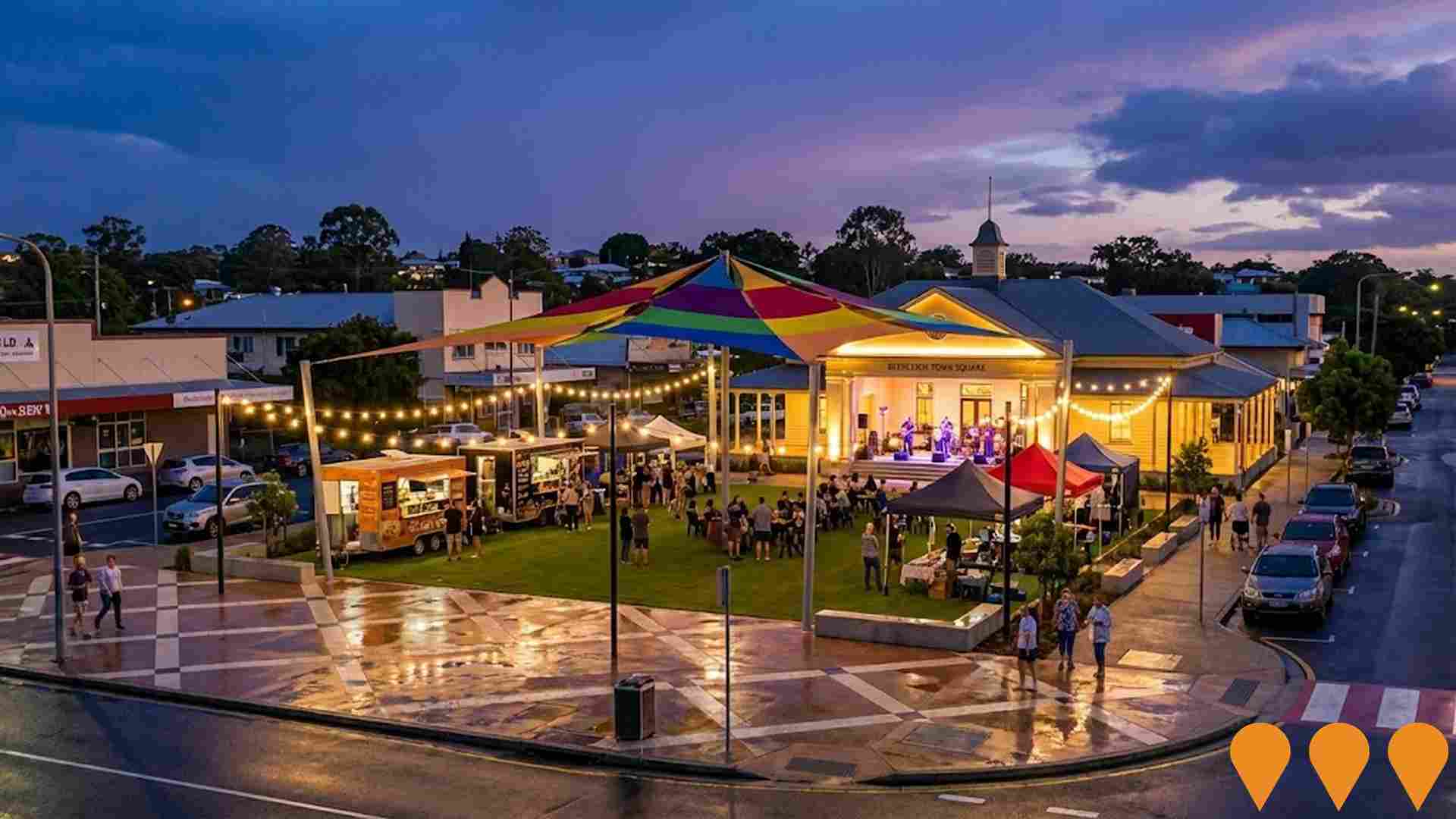
Loganlea Station Relocation Project
Relocation and upgrade of Loganlea train station to a new site opposite Logan Hospital, with improved accessibility (ramps, stairs and lifts), wider raised platforms, pedestrian overpass, secure bike storage, real-time information, lighting and CCTV, and an at-grade park and ride matching current capacity. Part of the Logan and Gold Coast Faster Rail program. Major construction is underway with opening targeted for 2027.
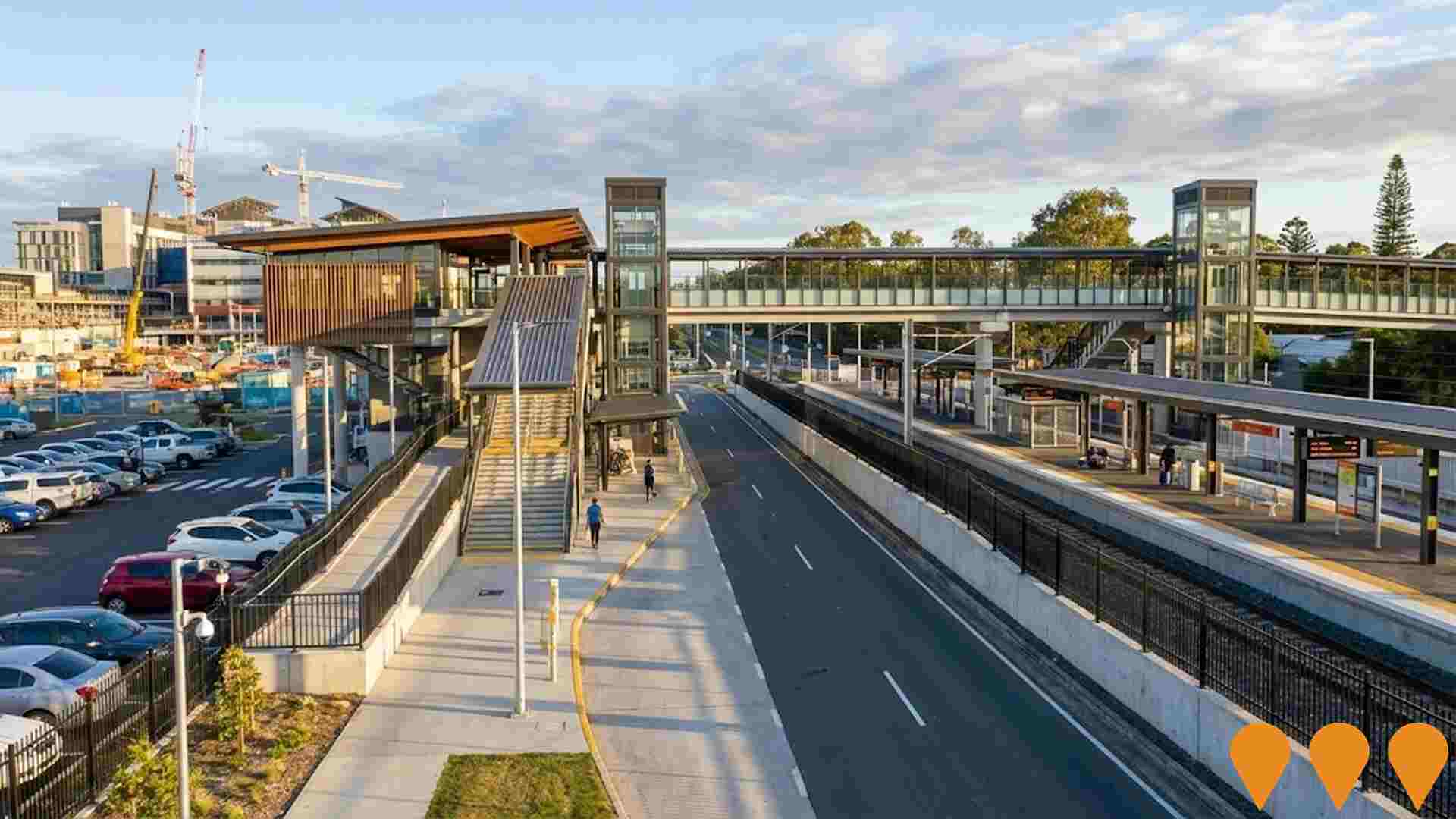
Beenleigh-Redland Bay Road Upgrade
Major road infrastructure upgrade improving connectivity between Beenleigh and Redland Bay. Includes road widening, intersection improvements, and enhanced safety measures to accommodate growing traffic volumes.
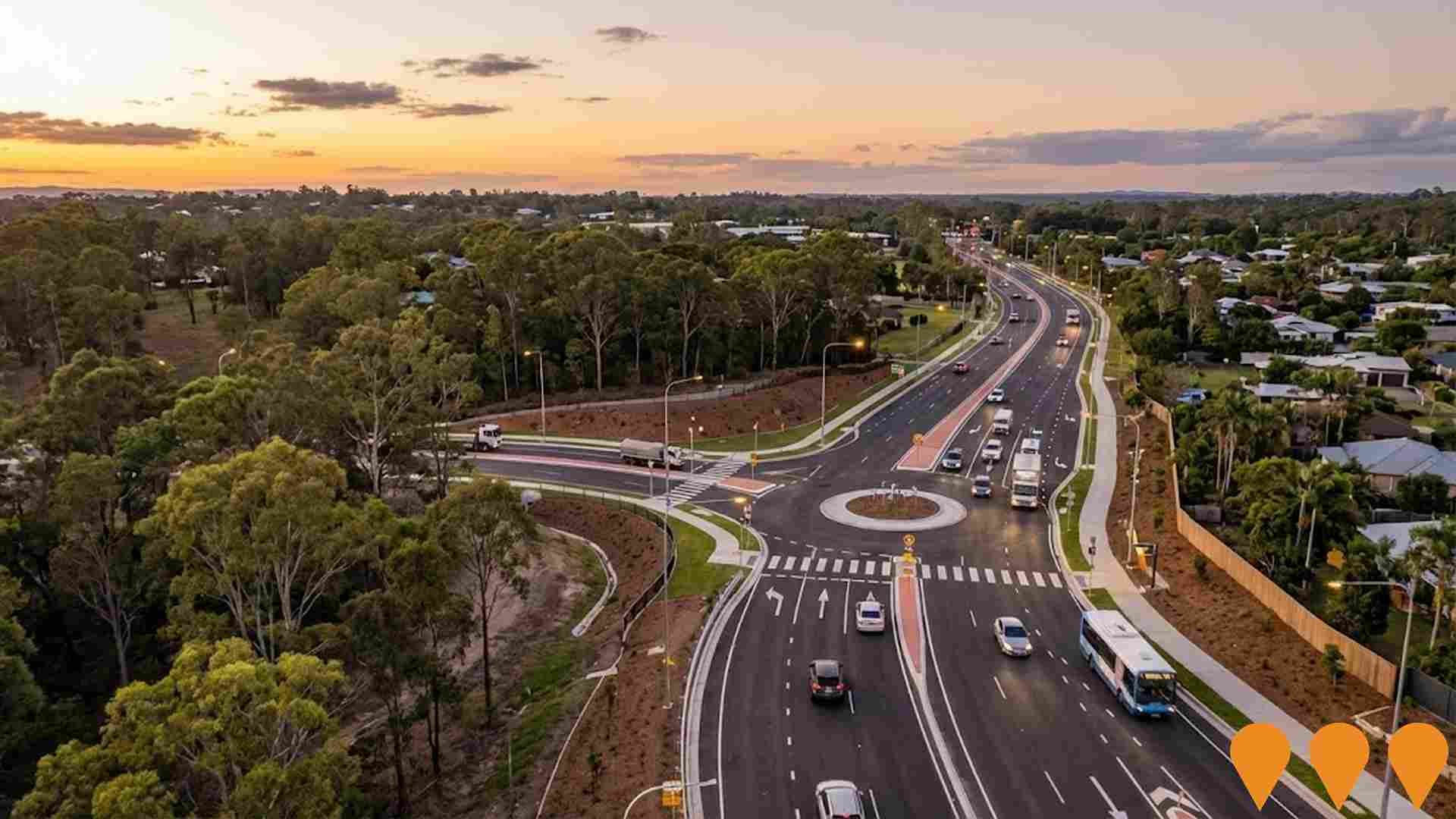
Beenleigh Marketplace Enhancement
Enhancement of established Beenleigh Marketplace with over 55 specialty stores. Improvements include expanded retail space, upgraded food court facilities, improved accessibility, and enhanced customer amenities to serve growing community needs.
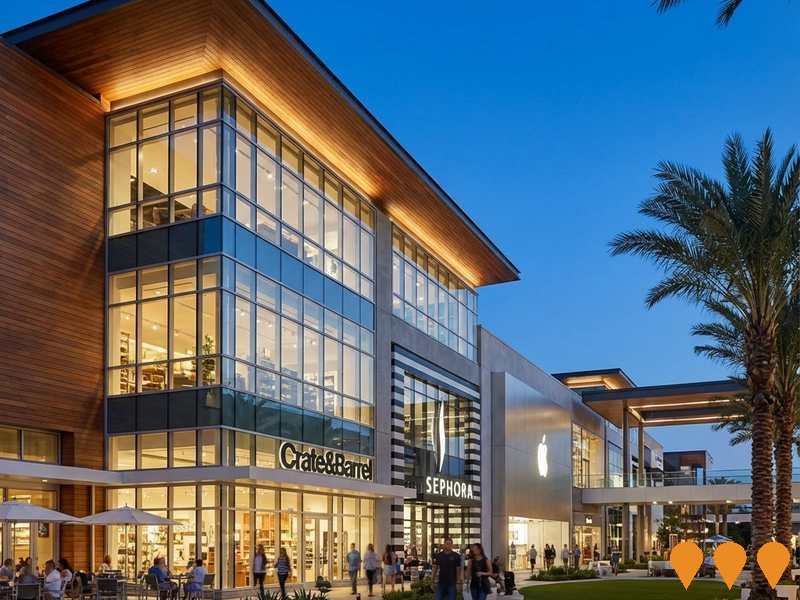
Holmview Shopping Centre Expansion
Expansion of existing shopping centre to meet growing community demand. Plans include additional retail outlets, improved parking facilities, and enhanced customer amenities for the Holmview community.

Meadowbrook Health Centre
New community health centre providing expanded primary healthcare services, specialist clinics, mental health services and allied health programs to serve the growing Logan area population.
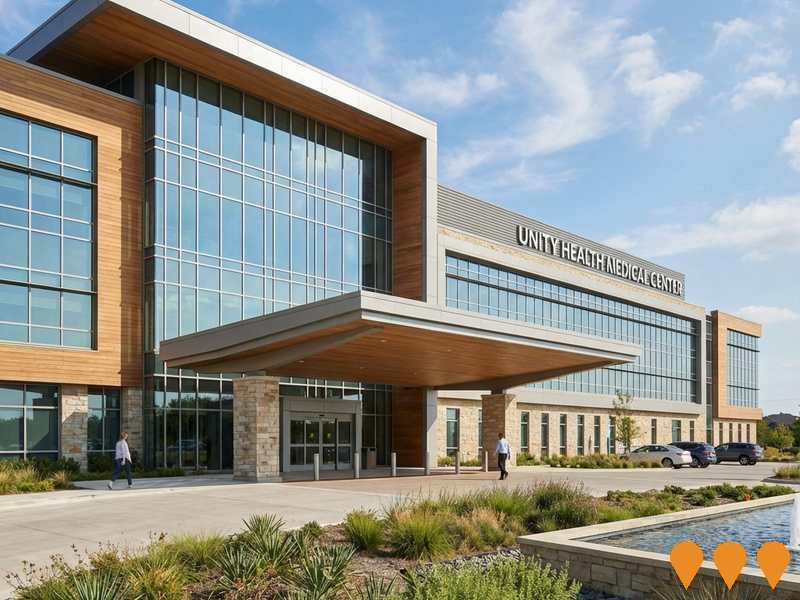
Beenleigh Central Shopping Complex
New shopping complex featuring tavern and 10 retail outlets with exceptional dual street access and high visibility location. Developed to serve growing Beenleigh retail demand with modern facilities and ample parking.

Beenleigh Community Hub
A new community facility providing library services, meeting spaces, recreational programs, youth services, and community support programs to serve the growing Beenleigh area.
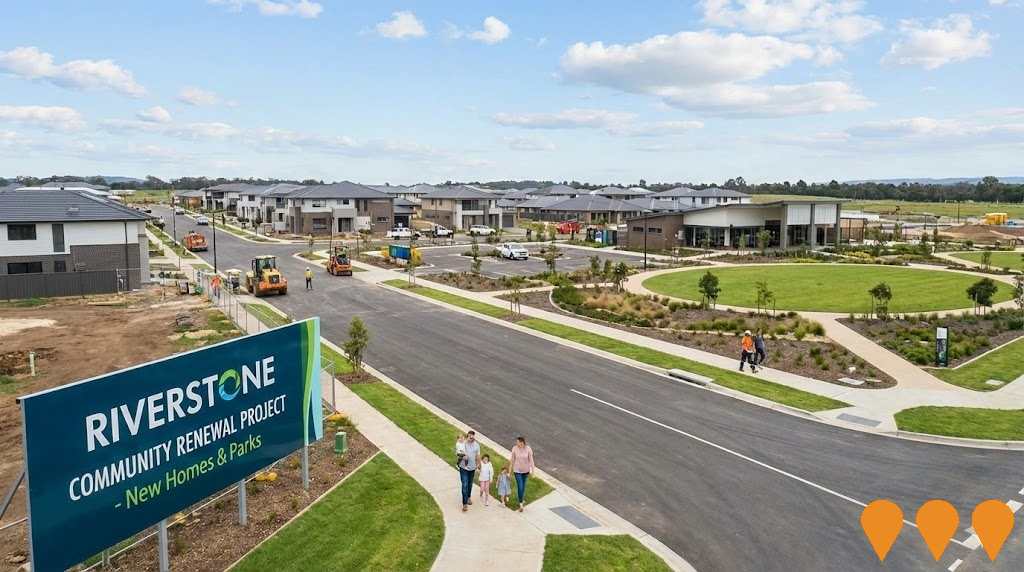
Employment
Eagleby shows employment indicators that trail behind approximately 70% of regions assessed across Australia
Eagleby has a balanced workforce with representation from both white and blue collar jobs. Manufacturing and industrial sectors are strongly present in the area.
The unemployment rate in Eagleby stands at 7.0%, with an estimated employment growth of 7.0% over the past year. As of June 2025, there are 6,015 residents employed while the unemployment rate is 2.9% higher than Greater Brisbane's rate of 4.1%. Workforce participation in Eagleby lags behind Greater Brisbane at 46.7% compared to 64.5%. Employment among residents is concentrated in health care & social assistance, manufacturing, and construction.
Manufacturing employment levels are particularly high, at 1.9 times the regional average. Professional & technical jobs have limited presence, with only 2.9% of employment compared to the regional average of 8.9%. The area appears to offer limited local employment opportunities as indicated by the count of Census working population versus resident population. Between June 2024 and June 2025, employment levels increased by 7.0%, while labour force grew by 4.9%, leading to a decrease in unemployment rate by 1.8 percentage points. In contrast, Greater Brisbane saw employment rise by 4.4%, labour force grow by 4.0%, and unemployment fall by 0.4 percentage points during the same period. Jobs and Skills Australia's national employment forecasts from May 2025 suggest potential future demand within Eagleby. These projections estimate national employment growth of 6.6% over five years and 13.7% over ten years, with varying growth rates across different industry sectors. Applying these projections to Eagleby's employment mix suggests local growth of approximately 5.9% over five years and 12.6% over ten years, though it is important to note that this is a simple weighting extrapolation for illustrative purposes and does not account for localized population projections.
Frequently Asked Questions - Employment
Income
Income metrics place the area in the bottom 10% of locations nationally according to AreaSearch analysis
Eagleby's median income among taxpayers was $41,414 in financial year 2022, according to AreaSearch data aggregated from the latest ATO figures. The average income stood at $46,300 during this period. In comparison, Greater Brisbane had median and average incomes of $55,645 and $70,520 respectively in financial year 2022. Based on a Wage Price Index growth rate of 13.99% since then, estimated median income for Eagleby is approximately $47,208 as of September 2025, with average income projected at around $52,777 during the same period. Census data indicates that incomes in Eagleby fall between the 7th and 10th percentiles nationally for households, families, and individuals. Income distribution shows that 33.2% of Eagleby's population (5,013 individuals) earn within the $800 - $1,499 range, differing from surrounding regions where the dominant income bracket is $1,500 - $2,999 at 33.3%. Housing affordability pressures are severe in Eagleby, with only 79.6% of income remaining after housing costs, ranking at the 6th percentile nationally.
Frequently Asked Questions - Income
Housing
Eagleby is characterized by a predominantly suburban housing profile, with above-average rates of outright home ownership
Eagleby's dwelling structures, as per the latest Census, consisted of 75.6% houses and 24.4% other dwellings (semi-detached, apartments, 'other' dwellings). Brisbane metro had 78.9% houses and 21.1% other dwellings. Home ownership in Eagleby was at 29.5%, with mortgaged dwellings at 23.4% and rented ones at 47.1%. The median monthly mortgage repayment was $1,300, below Brisbane metro's average of $1,560. Median weekly rent in Eagleby was $320, compared to Brisbane metro's $340. Nationally, Eagleby's mortgage repayments were significantly lower than the Australian average of $1,863, and rents were substantially below the national figure of $375.
Frequently Asked Questions - Housing
Household Composition
Eagleby features high concentrations of group households and lone person households, with a lower-than-average median household size
Family households constitute 64.5% of all households, including 20.1% couples with children, 25.4% couples without children, and 17.5% single parent families. Non-family households account for the remaining 35.5%, with lone person households at 31.0% and group households comprising 4.5%. The median household size is 2.4 people, smaller than the Greater Brisbane average of 2.6.
Frequently Asked Questions - Households
Local Schools & Education
Eagleby faces educational challenges, with performance metrics placing it in the bottom quartile of areas assessed nationally
The area faces educational challenges, with university qualification rates at 10.9%, significantly lower than the Greater Brisbane average of 30.5%. This presents both a challenge and an opportunity for targeted educational initiatives. Bachelor degrees are the most common, at 8.1%, followed by postgraduate qualifications (1.9%) and graduate diplomas (0.9%). Trade and technical skills are prominent, with 42.4% of residents aged 15+ holding vocational credentials - advanced diplomas (10.8%) and certificates (31.6%).
Educational participation is high, with 30.8% of residents currently enrolled in formal education. This includes 12.2% in primary education, 8.7% in secondary education, and 2.9% pursuing tertiary education. Eagleby's three schools have a combined enrollment of 1,056 students as of the latest data. The area has varied educational conditions, with two primary schools and one secondary school serving distinct age groups. Local school capacity is limited at 7.0 places per 100 residents compared to the regional average of 16.1, leading many families to travel for schooling. Note: where schools show 'n/a' for enrolments, please refer to the parent campus.
Frequently Asked Questions - Education
Schools Detail
Nearby Services & Amenities
Transport
Transport servicing is low compared to other areas nationally based on assessment of service frequency, route connectivity and accessibility
Transport analysis shows 48 active stops operating in Eagleby, consisting of buses. These stops are served by 5 routes, offering 232 weekly passenger trips combined. Transport accessibility is rated good, with residents usually located 213 meters from the nearest stop.
Service frequency averages 33 trips per day across all routes, resulting in approximately 4 weekly trips per individual stop.
Frequently Asked Questions - Transport
Transport Stops Detail
Health
Health performance in Eagleby is a key challenge with a range of health conditions having marked impacts on both younger and older age cohorts
Eagleby faces significant health challenges, with various conditions affecting both younger and older residents. Private health cover is low at approximately 46%, compared to 49.1% in Greater Brisbane and a national average of 55.3%. The most prevalent conditions are arthritis (11.4%) and mental health issues (11.0%).
Conversely, 57.1% report no medical ailments, lower than the 63.1% in Greater Brisbane. Residents aged 65 and over comprise 22.4%, higher than Greater Brisbane's 16.1%. Senior health outcomes present challenges broadly aligned with the general population's health profile.
Frequently Asked Questions - Health
Cultural Diversity
Eagleby was found to be more culturally diverse than the vast majority of local markets in Australia, upon assessment of a range of language and cultural background related metrics
Eagleby's population was found to be more linguistically diverse than most local areas, with 13.7% speaking a language other than English at home as of the 2016 Census. Overseas birth made up 28.7% of Eagleby's population in this period. Christianity was the predominant religion in Eagleby, representing 46.9%.
The 'Other' religious category showed slight overrepresentation in Eagleby at 1.5%, compared to Greater Brisbane's 1.4%. In terms of ancestry, English (28.6%) and Australian (24.5%) were the most represented groups, followed by Other (9.9%). Notable differences existed for Maori (Eagleby: 4.0% vs regional: 3.0%), New Zealand (1.7% both locally and regionally), and Samoan (Eagleby: 1.3% vs regional: 1.1%).
Frequently Asked Questions - Diversity
Age
Eagleby's population is slightly younger than the national pattern
Eagleby's median age is 37 years, nearly matching Greater Brisbane's average of 36 and close to Australia's median of 38. Compared to Greater Brisbane, Eagleby has a higher proportion of residents aged 75-84 (10.2%) but fewer residents aged 25-34 (13.1%). Between the 2021 Census and now, the 75 to 84 age group has grown from 8.9% to 10.2%, while the 65 to 74 cohort has declined from 10.8% to 9.4% and the 25 to 34 group has dropped from 14.3% to 13.1%. By 2041, demographic modeling suggests Eagleby's age profile will change significantly. The 85+ cohort is projected to grow by 155%, adding 676 residents to reach 1,111. Residents aged 65 and above are expected to drive 73% of population growth, indicating a trend towards demographic aging. Conversely, the 15 to 24 and 0 to 4 age groups are projected to experience population declines.
